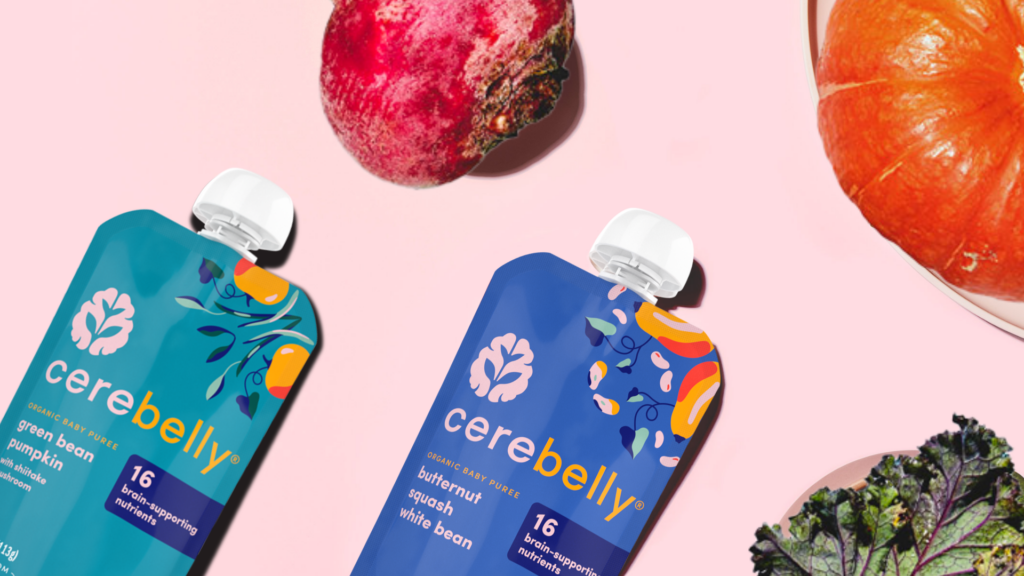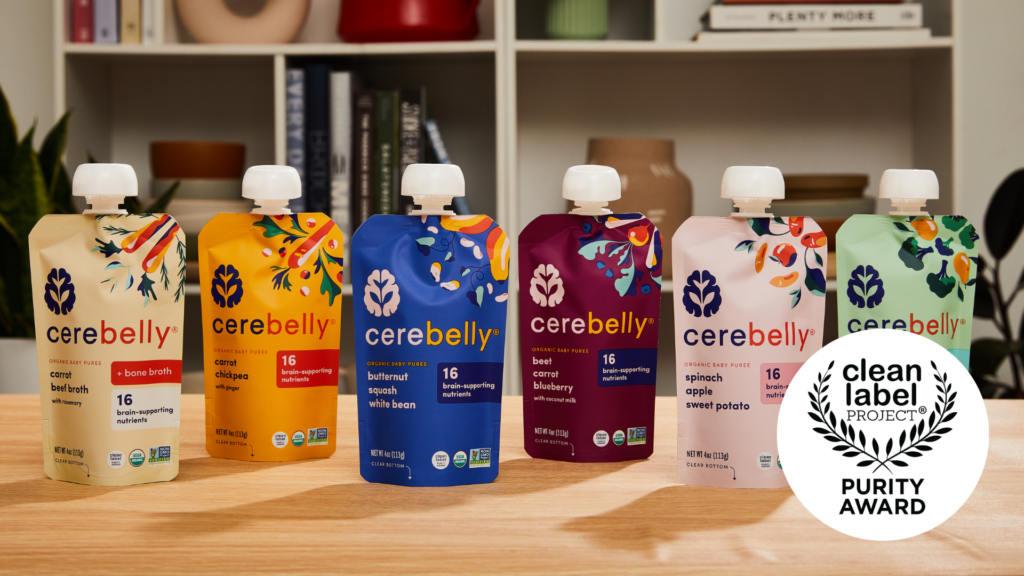Falling for Fall ingredients
*Disclaimer: this article is not meant to be individual medical/nutrition advice but for education purposes only. Each child’s nutritional needs are different.
Pumpkin
The iconic symbol that invokes the ‘feeling’ of Fall. Deep orange, and warm like sunshine; pumpkins represent the sliver of summer hanging on and the welcome color change of the trees. It’s a feeling of comfort. Funny how a food can do that.
Sweet and delicious pumpkin puree or soft cooked pieces are a perfect food for babies as they begin their food journey. It’s delicate flavor makes it versatile to mix with other foods too.
Nutritional value
Pumpkin is packed with vitamin A, most of which is in the form of beta-carotene. But wait, aren’t vitamin A and beta carotene one and the same? Well, beta carotene is a form of vitamin A, called provitamin A, and is found in plant foods like pumpkin, carrots and sweet potatoes. Animal foods, on the other hand, contain preformed vitamin A. The body converts both provitamin A from plant foods and preformed vitamin A from animal foods into the active form of vitamin A that the body can actually use.
Pumpkin is also a great source of copper. Copper is considered to be an essential nutrient for the brain and body. Small amounts of copper, along with certain enzymes in the brain, help form key neurotransmitters that help brain cells “talk” to one another. This is akin to how signals between phone wires allow us to have phone conversations. Copper is also a key nutrient that helps support the hippocampus, the part of your brain responsible for memory (1).
| Nutrient | ½ cup cooked pumpkin | 1 pouch Cerebelly White Bean Pumpkin Apple *** | Daily Recommended Intake* | Daily Recommended Intake* |
| 7-12 mo | 1-3 yrs | |||
| Vit A (ug RAE**) | 350ug RAE | 7-124ug RAE | 500ug RAE | 300 ug RAE |
| Copper (ug) | 115ug | 100ug | 220ug | 340ug |
*Dietary Reference Intakes (RDA or AI) **Retinol Activity Equivalent. ***Vitamin A and copper in Cerebelly pouch come from various whole food ingredients, no solely the pumpkin.
Delicious ways to serve up pumpkin to kids:
- Cerebelly purees! Carrot Pumpkin, White Bean Pumpkin Apple, Green bean Pumpkin
- Use a sugar pumpkin/pie pumkin. Cut into halves, place on baking sheet, drizzle with avocado oil or olive oil, pinch of salt. Roast at 350degF until flesh is soft.
- Use roasted pumpkin (see above) to make soups, add to mac n cheese, or mash with regular potatoes for a nutrition boost
Beets
Beets are a naturally sweet n’ earthy root vegetable that I LOVE to incorporate into meals this time of year. Their deep crimson color is from plant pigments called polyphenols. Polyphenols have antioxidant properties which are important for the health of our cells. Super *fun* fact: beets can cause urine to tinge pink. This isn’t harmful, but can cause concern for some parents if not aware this can happen.
Nutritional value
The hype about beets is not only around their antioxidant power, but also because they’re rich in the folate. Folate is a B vitamin naturally occuring in food (as opposed to the form of folic acid found in supplements). It’s important to get enough because your body uses folate to metabolize proteins, make new body cells and synthesize DNA. In pregnancy, folate and folic acid help prevent neonatal neural tube defects like spina bifida.
| Nutrient | ½ cup cooked beets | 1 pouch Cerebelly Beet Carrot Blueberry*** | Daily Recommended Intake* | Daily Recommended Intake* |
| 7-12 mo | 1-3 yrs | |||
| Folate (ug DFE**) | 34ug DFE | 43ug DFE | 80ug DFE | 150ug DFE |
*Dietary Reference Intakes (RDA or AI) **Dietary Folate Equivalent. ***Folate in Cerebelly pouch is from various whole food ingredients, not solely the beets.
Delicious ways to serve up beets to kids:
- Roasting fresh raw beets can take over 1 hour in the oven. Who has time for that? Here’s a tip: try peeling the raw beets first, and slicing into 1/2″ thick slices, THEN roast them on a baking sheet. SO much faster! If your kids like a little tartness, drizzle with balsamic vinegar.
- Mix 1 pouch of Cerebelly Beet Carrot Blueberry puree into a bowl oatmeal. Top with some frozen blueberries (defrosted first).
- Using a food processor with the grater attachement (if available), grate raw peeled beets. Add to vegetable broth, and let boil along with other vegetables. Broth will turn slightly purple, for a super nutritious, FUN soup!
Kale
Fall is like a fresh start even though it’s technically not the beginning of a new year. It’s also a prime time to bring our focus to planning nutritious meals. This leafy green goddess of a vegetable is one of the most nutritious veggies out there. Yes, it has rough texture that can make it hard to incorportate into young children’s meals; but keep reading for some tips and tricks below. It’s time to get your kids to fall for this Fall superfood.
Nutritional value
Kale is loaded with vitamins and minerals that kids need for optimal growth and development in the early years of life. I love it because a little goes a long way, especially when you cook and puree it. Kale is rich in fibe, vitamin A, copper, vitamin K, folate, vitamin B6 and lutein.
Lutein is a vitamin-like nutrient called a carotenoid, which acts as an antioxidant, protecting brain cells early in life. Lutein can not be made by the body, so we need to get it from our food. It’s no suprise that breastmilk in the early months is rich in lutein (but highly dependent on maternal intake). Lutein is a key nutrient for eye and brain development, and scientific literature has shown that lutein may have an impact on cognition and memory (2).
Vitamin B6 is used by the cells to perform many different functions involved in metabolism, in particular protein metabolism. This means that it plays an important role in converting the food we eat into energy. It supports brain development and a healthy immune system. (3)
| Nutrient | ½ cup cooked kale | 1 pouch Cerebelly Kale Sweet Potato Apple *** | Daily Recommended Intake* | Daily Recommended Intake* |
| 7-12 mo | 1-3 yrs | |||
| Vitamin B6 (mg) | 0.1mg | 0.3mg | 0.3mg | 0.5g |
*Dietary Reference Intakes (RDA or AI) ***Quantity of vitamin B6 in Cerebelly pouch is from various whole food ingredients, not solely the kale.
Delicious ways to serve up kale to kids:
- Soften the texture of kale by steaming or boiling briefly. You can also puree it in a blender.
- Add cooked or pureed kale to soups, stews, or (my favorite) into pasta sauce.
- Try Cerebelly Kale Sweet Potato Apple puree as a base for sauces or soups when in need a quick convienent way of getting your kale IN.
Have more questions? Send us an email at support@cerebelly.com and we will be sure to get back to you!
References:
(1) National Institute of Health on Copper. Last updated: Oct 18, 2022
(2) Gazzolo D. et al. Early Pediatric Benefit of Lutein for Maturing Eyes and Brain-An Overview. Nutrients. 2021 Sep 17;13(9):3239.
(3) National Institute of Health on Vitamin B6. Last updated: Jun 16, 2023
Want optimal nutrition to support your little one’s brain development?
Cerebelly® is the first and only science-backed baby food that delivers whole food nutrition designed for optimal cognitive development. Check out our purees and smart bars with key brain-supporting nutrients to support your little one at every stage of their growth.







